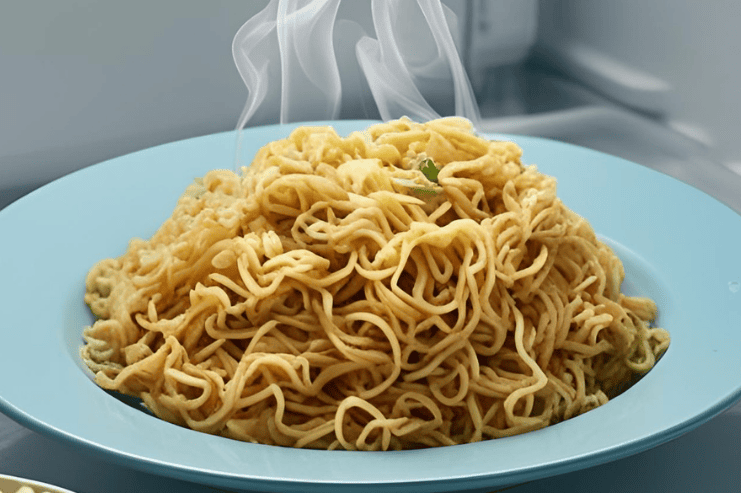What happens if you put hot food in a commercial refrigerator?
In this article, we’ll explore the science and risks behind putting hot food in your commercial refrigeration.
27 May 2025

Sometimes, it feels like putting your freshly cooked hot food straight into your commercial refrigerator is a quick fix. The faster it’s in storage, the sooner you can move on to the next project, right?
Unfortunately, putting hot food into a refrigerator isn’t a great idea. In fact, it could lead to serious appliance and hygiene issues. In this article, we’ll delve into the science and risks behind this surprisingly common mistake, helping you manage your refrigeration and maintain smooth operations in your business. The good news is there are ways to improve this process without compromising on food safety or equipment....
Heat isn’t great for refrigeration
Temperature, and anything else involving energy, like pressure or movement, tends to reach equilibrium. This means that if nothing interferes, the energy levels balance out over time. For example, if you leave your cup of tea on the counter, it cools down to match the room temperature. At the same time, unless the room’s being heated, the heat from your coffee also warms the air around it just a little. This is known as thermal equilibrium.
This principle of thermal equilibrium is the main danger of putting hot food into a commercial refrigerator. It creates an immediate temperature spike inside your appliance. Now, of course, the cooling system in a refrigerator is designed to kick in and overcome any heat, transferring it outside the unit and into the air, but adding hot food gives it far more to do than it should have to. Your unit will have to use more energy and put more wear on its systems. The temperature of any food around the new input may also rise to unsafe levels before cooling again, which breaches FSA hygiene laws (as discussed below).

Food safety
Putting hot food in your commercial refrigerator brings significant food safety risks. Food shouldn’t stay in the so-called ‘Danger Zone’ (between 8°C and 63°C) for extended periods. That’s by law, according to the Food Standards Agency.
As soon as you put hot food inside the fridge, the internal temperature starts warming up. Although the cooling system should work to counteract it, it’ll take time to bring the temperature back down to normal, and even longer if your appliance is old or needs servicing. Fridges should be set between 0°C and 5°C, so it doesn’t take much for the temperature to breach 8°C.
In the meantime, other foods in the fridge (especially those near the hot food you just put in) will almost certainly creep into the danger zone. That’s where harmful bacteria grow, putting both food quality and customer safety at risk.
But we aren’t done yet. Cross-contamination is another concern. As hot food cools, the moisture escaping as condensation settles on other objects. It may carry bacteria, increasing the risk of cross-contamination and foodborne illnesses.
Moisture
When hot food cools – especially when it cools quickly – it forms condensation. The moisture in this condensation gathers inside the fridge and creates humidity problems such as ice build-up inside the unit, blocking or partially blocking ventilation and ice on the evaporator coils.
What's more, condensation might form on surfaces inside the fridge. This creates a risk of bacteria growing, especially if the temperature’s slightly too warm and the fan isn’t keeping humidity under control.
All this means your fridge is forced to work harder to keep things cool. Left unchecked, you’ll eventually see blockages, reduced airflow, uneven temperatures and the resultant issues with your appliance. These include its running costs plus the quality and safety of the food stored inside. The longer this goes on, the worse it’ll get.

Proper cooling methods and systems
The good news is there are ways to improve this process without compromising on food safety or equipment. Here are several cooling methods to experiment with so you never have to put hot food directly into your commercial fridge:
• Blast chillers quickly lower the temperature of hot food. They’re designed to cool hot food rapidly, and this means you avoid the vast majority of the problems mentioned above.
• Ice baths absorb the heat from any hot food quickly. Use them carefully to lower your food’s temperature to a safe level before transferring it to your commercial refrigerator.
• Shallow containers – instead of deep ones – allow heat to dissipate faster. The warmth doesn’t get ‘trapped’ in the middle so easily. The larger surface area speeds up the cooling process. A depth of less than two inches is usually recommended.
• FIFO (first in, first out) rotation ensures your food is stored properly. This reduces the chance of food sitting too long in the danger zone. Don’t forget your use-by-date labels, either.
The cost of ignoring good cooling practices
Although it might feel like nobody’s watching or will notice, neglecting the proper cooling methods could be costly.
For one, your fridge’s compressor experiences greater strain, so it’ll wear out faster. That means more repairs and perhaps even an early replacement for the entire appliance. It also means more food waste. And, of course, there’s the potential damage to your reputation if food safety issues arise.
On the other hand, maintaining proper cooling practices will save you money in the long run. You’ll reduce the risk of equipment failure, cut down on energy bills, minimise food waste, and protect your reputation. Most importantly of all, you’ll minimise the risk of foodborne illness. There’s nothing to lose.
That’s where TEFCOLD UK comes in. Our range of commercial refrigeration solutions helps you maintain the right conditions for your food, your drink and your business as a whole. Browse our website today to explore our commercial fridges, freezers, and other cooling equipment (like blast chillers). And please don’t hesitate to reach out for expert, friendly advice.
